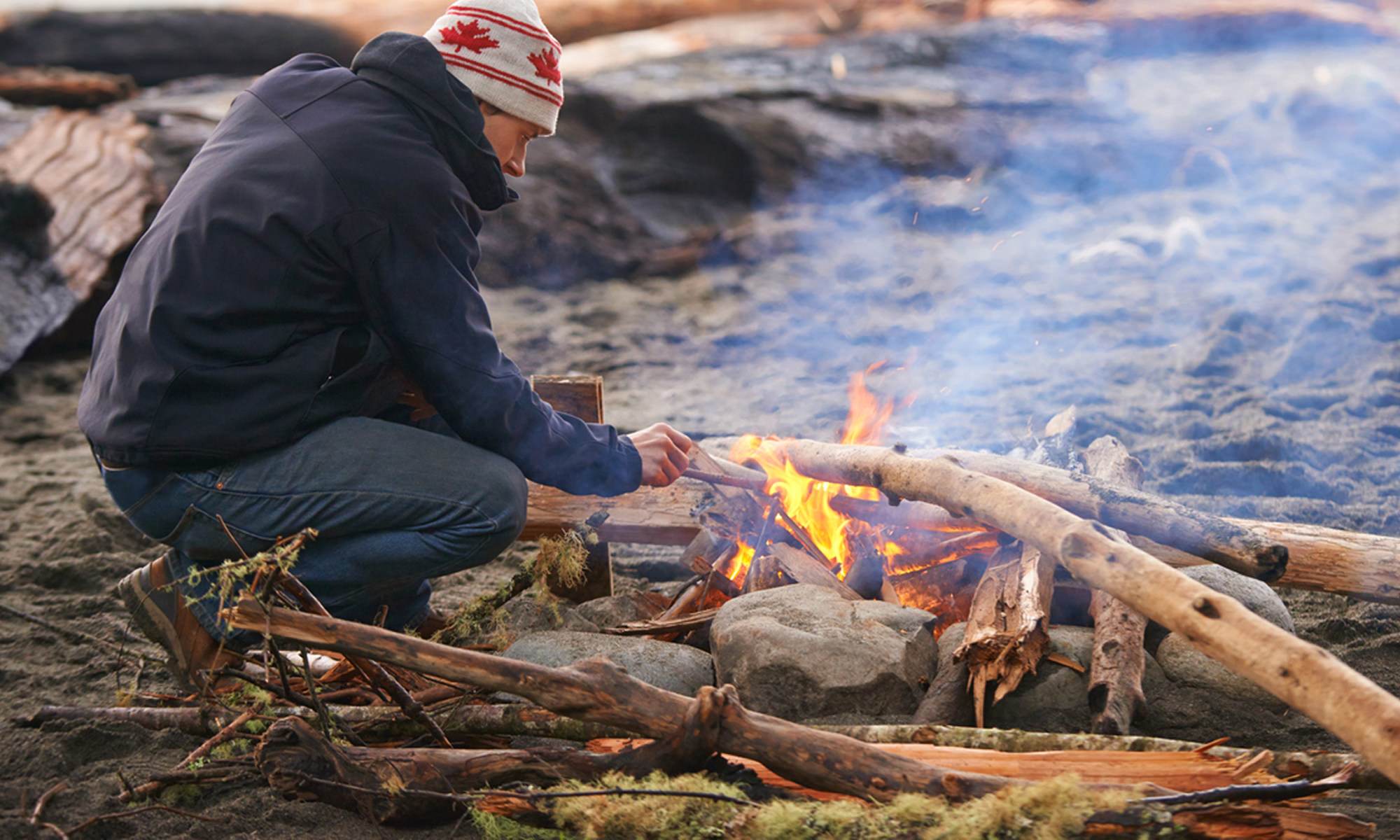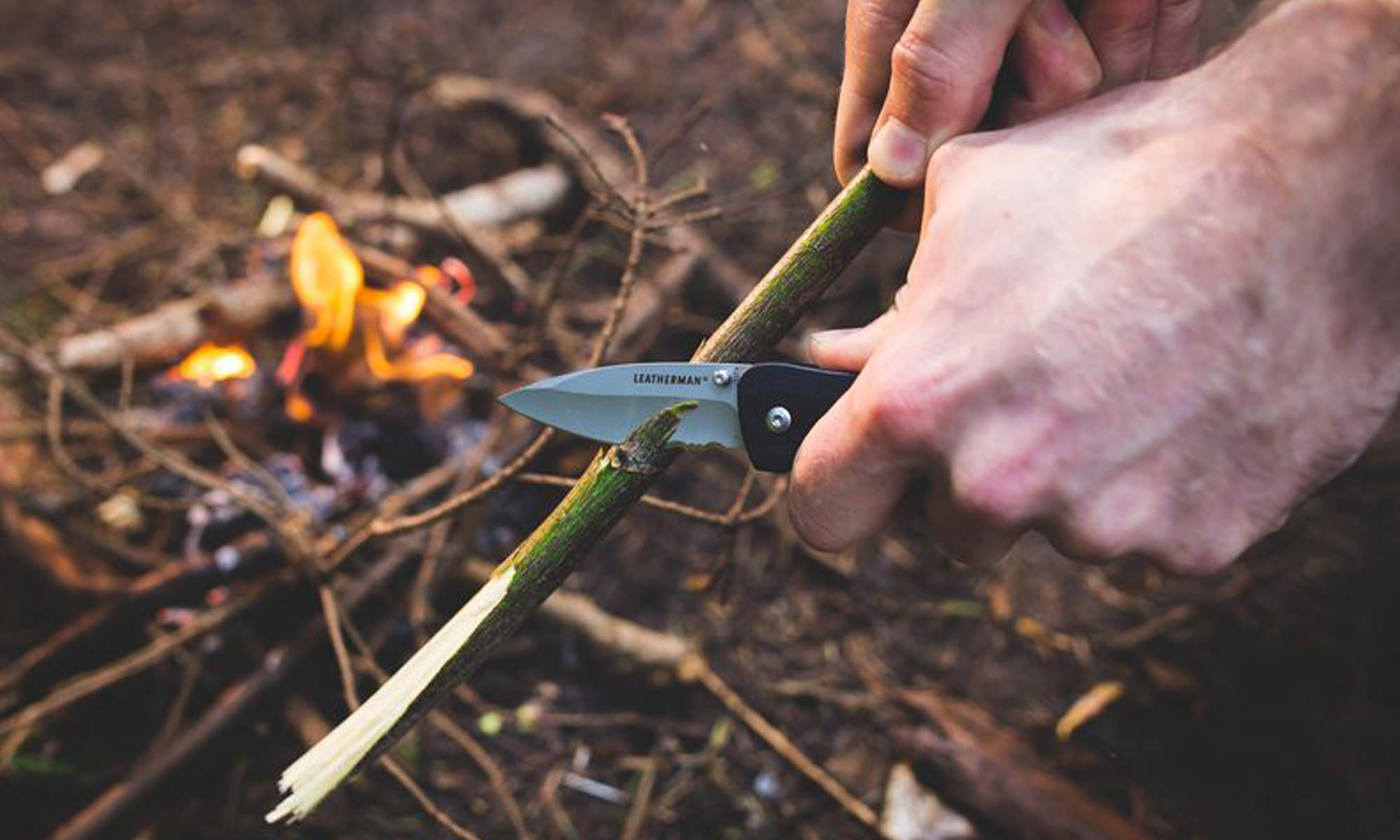It’s been pouring all day and every piece of gear you brought is soaked through. You’re dying to dry it all by the fire—yet you’re having a tough time starting a fire because, just like your socks and hiking boots, the firewood is totally soaked.
What’s a soggy camper to do? There’s almost always a way to get a fire going, even in wet conditions.
Expand Your Search
Wood that’s been exposed to the elements is likely to be pretty wet, especially if it’s been raining hard for a few days. Solution: seek out wood that has been sheltered from the rain under heavy brush, trees, and other natural coverings. You can usually find some decent kindling if you stick very close to the ground.
If you can scout out a dead tree that hasn’t yet fallen over, you may have hit the jackpot. The lower branches could be dry, if they’ve been somewhat protected. Snap them off and thank your lucky stars.
Remember the Basics
Most fires start with some teeny tiny tinder, are built up with kindling, then the larger sticks and logs come into play. A fire built in wet conditions is no different—but the first few steps are really crucial. Gather plenty of small tinder—more than you think you’ll need—and be patient. Where does this dry tinder come from? We’ll get to that in a moment.
Get everything set up before you even attempt to light the fire. A teepee style is a solid go to—just be sure to add plenty of tinder and kindling by the bottom. Remember that oxygen is a key component a roaring fire, so incorporate lots of room for airflow in your basic structure.
Hack Away
Wood that feels wet to the touch might not be a lost cause after all. Using one of your favorite campfire tools, strip the wet bark off of a stick to expose the dry inner layers. Peel this dry wood into wood shavings—voila: the perfect tinder!
This technique works for larger pieces of wood, too. Use a hatchet to split larger sticks and logs for access to the dry core.
Bring in Some Help
This one requires a little foresight: if the weather forecast is looking a little dicey, throw some fire starter into your pack. It’ll give you an initial boost to get a decent fire going.
You can pick up various types of fire starters at any camping or outdoor store, or you can DIY it easily: coat cotton balls with petroleum jelly (i.e. Vaseline) and keep them in a zippered plastic bag. This weighs next to nothing, but it’s easy to light and the petroleum jelly keeps it burning for awhile.
Dry It Out
It took a little ingenuity, but you have finally succeeded at starting a fire in wet conditions—woohoo! Now, you just need to keep it going. Place damp pieces of wood along the perimeter of your fire. The hot flames will help dry out the wood, which can later be added to the fire.


